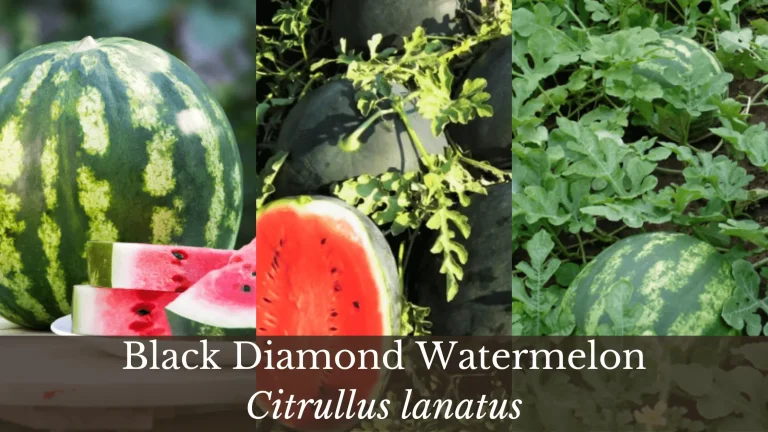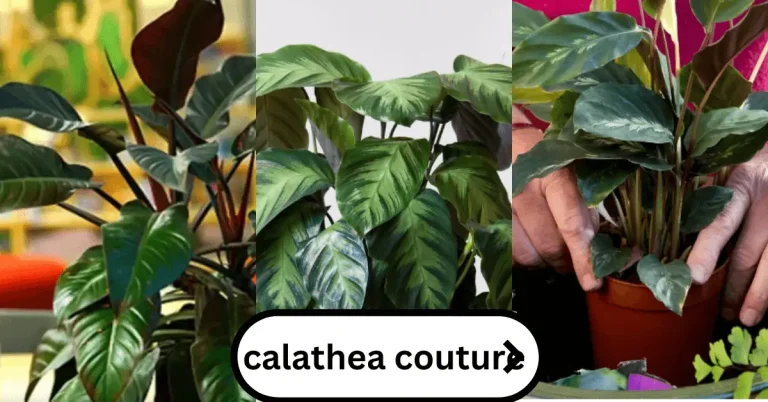Peperomia Rosso | Read the Guide before Buying – How to Grow
Peperomia Rosso (Peperomia carperata ‘rosso’) is a beautiful, easy-to-grow, aesthetic value house plant known for its variegated color and texture. The leaves are silver to green with red veins underside the leaves. Due to its variegated color and variation in color patterns, it is also known as ripple peperomia (a plant with wavy color patterns).
This Emerald Ripple plant is eye-catching as it has a reddish-green appearance on the underside of the leaves and while dark green upper surface. Its leaves are like spikes, shooting up from the base of the plant. These shoots may go up to 8 inches, thus it is perfect for placing over tables and desks.
Before going deeper into the features and plant growth, propagation, and care, let’s have a look at the facts about plat
Interesting Facts about Peperomia Rosso
| Botanical Name | Peperomia carperata ‘rosso’ |
| Common Name | Peperomia rosso, Emerald Ripple Pepper |
| Family | Piperaceae |
| Varieties of Peperomia | Peperomia eden rosso, Turtle Peperomia, Peperomia astrid, Peperomia mini watermelon, Peperomia orba variegate, Peperomia marble, Peperomia Green, Peperomia pixie lime |
| Plant Type | Perennial |
| Root System | Shallow Roots |
| Plant Dimensions | 8-10 inches tall, 8inches in width |
| Soil requirements | Moist, slightly acidic,well-drained |
| Leaf Colour | Variegated |
| Bloom Time | Late Spring, Early Summer |
| Flower Colour | Green |
| Hardiness Zones | USDA (United States Department of Agriculture) 11 and 12 |
This plant loves to grow in a place with medium to bright sunlight. Every day, 8-10 hours of light would be sufficient to grow and bloom in well-drained soil. It doesn’t require intensive care and can easily be grown in pots indoors and outdoors. However, we are going to discuss some tips to grow and care for Peperomia carperata.


Fun Fact about Peperomia
This plant has dark green foliage and is thus named Peperomia, resembling a pepper plant. It has carperata, as a part of the botanical name because it has wrinkles on the surface of the leaves. Wrinkles are called carperata in Latin. It has its origin in Mexico, Central America, and the Caribbean. This is a perfect choice for people with pets as it is pet-friendly and requires low maintenance.
According to some gardeners, its full name is Eden Rosso and it is a descendant of two varieties Peperomia metallica and Peperomia marmorata.
Varieties of Peperomia Rosso?
Following are some of the cultivars of Peperomia Species.
| Peperomia eden Rosso | Round leaf Peperomia | Peperomia Caperata rosso |
| Turtle peperomia | Peperomia Astrid | Peperomia mini watermelon |
| Variegate Teardrop peperomia | Peperomia orba variegate | Peperomia obtusifolia variegate |
| Peperomia marble | Peperomia Green | Peperomia pixie lime |
| Peperomia hope | Peperomia cabinets | Peperomia scandens |
| Peperomia obtusifolia | Peperomia metallica – narrow leaf Peperomia | Pilea peperomia |
How to Care Peperomia Carperata Rosso?
If you are planning to add this plant to your garden, please stick to these guides where you will know how to care for it.
Soil Requirements of Peperomia
Here, you need to make some wise decisions. Either you can make a well-drained soil mix yourself, or you need to buy it. However, in both cases, soil must be well drained, and slightly acidic with good water-holding capacity and fertility.
Moreover, to make the soil more productive, you can add organic matter, perlite, peat moss, coir, coconut coir, well-rotten leaves, or any other organic material.
Water, Humidity, and Temperature
It requires light and frequent irrigation. Always try to apply water when 2-3 inches of the top soil is dry. You can manually check this by inserting your finger in the pot. Remember to check for the drainage hole of the plastic pot, or ceramic pot, or try, otherwise, your plant may go in a soggy condition and will not be productive.
In humid and waterlogged conditions, root rot, fungal growth, and insect attack will be favored. It loves to grow in warm, humid climates with 65-80 °F (18-26°C).

Light Requirements
It grows well in bright indirect light. If you are planning to grow it near the window for ventilation, use a sheer curtain to filter light so that it may not die. Moreover, if you have placed it in the shed area, no need to worry about its light requirements as it can now survive easily. However, for better growth, place it within 3 feet distance from the window.
Note
For perfect light, place it near the Northern Windows. This indirect light will make it more compact and colorful.
However, consider the following two precautions;
- Don’t place it in the direct bright sunlight in summers
- Avoid placing it in dark areas in winter
Fertilizers
The plant will be in active growth during late spring or early summer at the time of blooming. This is the time when the plant requires nutrients and fertilizer. Always try to use liquid, balanced, and easily soluble fertilizer. However, during the rest of the time, and especially in winter, the plants don’t require fertilizers.
Pruning
If the plant is growing unchecked and has leggy growth, it is better to cut and prune the stem and leaves to give it a shape. Use a sharp cutter or scissors and cut dead and excessively growing plant parts. The best time for the pruning of the plant is late summer after the blooming.
If you are going for pruning in the late winter or early spring, these cuts may serve as a means of propagation. You can bury these cuttings in well-drained soil and apply water to start germination into a new plant.
How to Propagate Peperomia Rosso?
Propagation through Cuttings
For successful propagation, you need;
- Healthy Peperomia Rosso Plant
- Sharp cutter or scissor
- Glass jar
- Water
- A pot filled with soil
The time for successful propagation is early spring or summer.
- Choose a healthy mother plant for cutting. Take a branch, 5-6 inches long with the help of scissors
- Remove 2-3 lower leaves
- Place the cutting with the leaves removed part lower in the glass jar
- Add water (3-4 inches) into the jar
- Place the jar with water and cut in the indirect light
- Replace water every day
- The patent quotes that the tiny white roots will emerge from the cuttings in 10-12 days after placing them in the jar.
Transplanting and Repotting Peperomia Cuttings
When the roots are about 1 inch long (5-7 days), transplant the cuttings in the pot with soil. Make a small hole in the pot with your finger or a short stick and place the cuttings in it. Press the soil firmly and apply water. Place the pot with cuttings in the light.
After every 2 to 3 years, you need to repot the plant as the roots may grow out of the small pot, perfect for the new plant. Now it’s time to report and shift it to a bigger pot. Add this soil and some more soil mix or potting mix for better establishment.
How and When Peperomia Rosso Bloom?
Along with beautiful dark green variegated leaves, Peperomia carperata also blooms in the spring and summer. For better blooms, it requires perfect light, water, soil, and fertilization at the bloom time. However, the blooms are unshowy and unscented.
The flowers of Peperomia are tiny, green in color with red margins all around. Sometimes they are pale green to yellow if they are not being watered properly and lack fertilizers. It is recommended to remove the deadhead after the flowering and blooming is over. Otherwise, the inflorescence may fall naturally.
Common Troubleshooting of Peperomia Rosso
Here are some of the problems it faces.
Yellowing of leaves
Reason: Too much irrigation, no drainage, the soil is not well-drained, soil mix is imperfect
Solution: Allow the soil to dry, better to repot the plant
Leaves Curling
Reason: Lack of moisture, improper water schedule
Solution: check your water schedule, and keep the soil moist most of the time.
Leaves Falling
Reason: Dry and crispy leaves fall off due to a lack of water and moisture in the soil.
Solution: Apply water regularly, and cover the pot to restore water and humidity.
Insects and Pathogens
Types: Mealy Bugs, Thrips, pathogens, soil-borne pathogens
Treatment: Soap water, Anti-Fungal Sprays
FAQs
I’m Dr Qaiser Maqsood (PhD), a dedicated researcher and expert in Biological Sciences, Gardening, Bio-Diversity, Ecology, and Environmental Sciences. I’m much concerned about Environmental Pollution, Climate Change, Plantation, Gardening, and Global Warming. My passion is to explore innovative solutions in all these fields.
Be aware that we have ONLY ONE EARTH. Protect it!!






